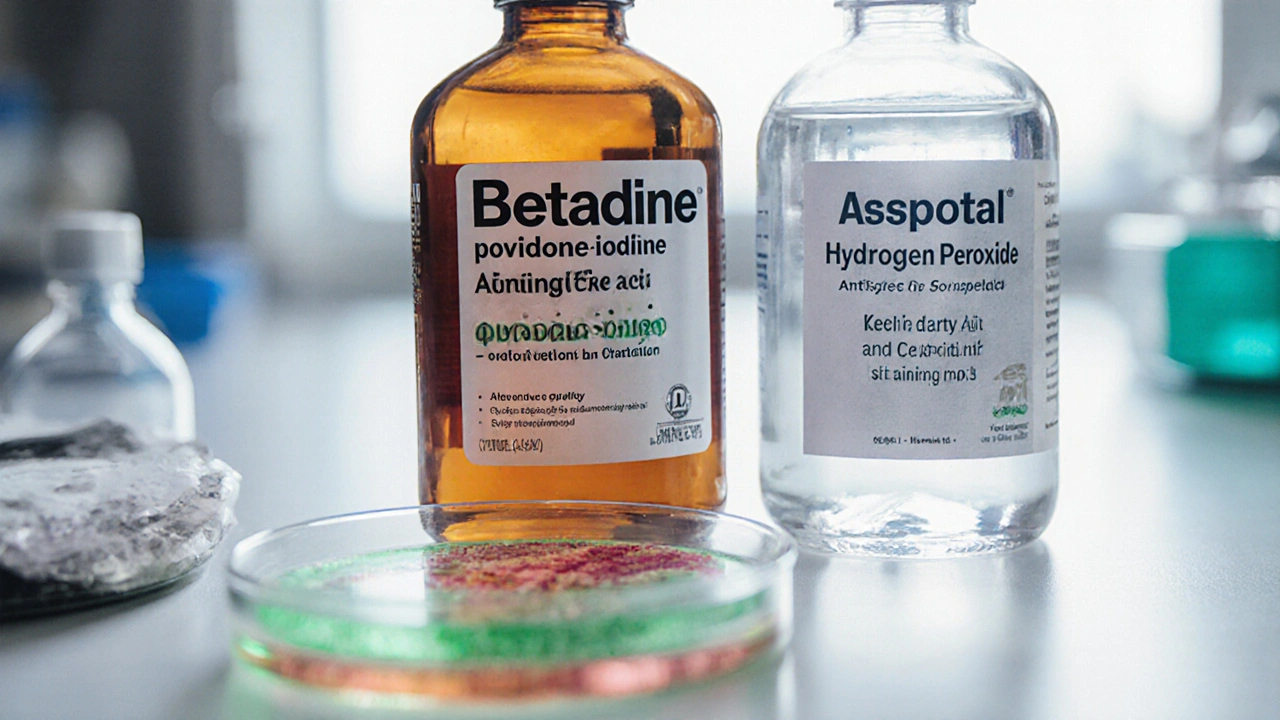When working with Povidone Iodine Alternatives, non‑iodine based antiseptic agents used for skin disinfection before medical procedures. Also known as non‑iodine antiseptics, they provide options for patients allergic to iodine, avoid staining, or need a different antimicrobial spectrum. The field includes several key players: Chlorhexidine, a broad‑spectrum antiseptic with lasting activity on skin, Hydrogen Peroxide, an oxidative agent that rapidly kills bacteria and viruses, and Alcohol (Isopropyl or Ethyl), a fast‑acting solvent that denatures proteins and disrupts cell membranes. Each of these substances encompasses a distinct mechanism of action, requires specific handling precautions, and influences post‑procedure skin healing in its own way. Understanding these relationships helps you pick the right alternative for a given situation.
Effectiveness, safety, cost, and patient tolerance are the main attributes that guide selection. Chlorhexidine offers a persistent kill‑time, making it ideal for surgeries where prolonged antiseptic activity is critical, but it can cause allergic reactions in a small subset of users. Benzalkonium Chloride, a quaternary ammonium compound used in many wipes and sprays shines in situations that demand a non‑flammable agent, yet its spectrum is narrower than chlorhexidine’s. Hydrogen Peroxide excels at cleaning contaminated wounds because its bubbling action lifts debris, but it may irritate healthy tissue if used at high concentrations. Alcohol‑based solutions act within seconds, making them perfect for quick skin prep, but they evaporate fast, leaving no residual protection. Cost considerations also matter: generic alcohol and hydrogen peroxide are inexpensive, whereas chlorhexidine formulations can carry a premium price. By matching these attributes to the clinical scenario—such as a need for lasting antimicrobial coverage, a patient’s allergy profile, or budget constraints—you create a logical, evidence‑based choice.
The landscape of antiseptic options continues to evolve, with new formulations aiming to combine the best traits of existing agents while minimizing drawbacks. Whether you’re a clinician seeking a reliable prep for a minor procedure or a home‑care provider looking for a safe, stain‑free disinfectant, the alternatives outlined above give you a solid toolbox. Below you’ll find a curated collection of articles that dive deeper into each option, compare efficacy, and offer practical tips for selecting the right antiseptic for your needs.
Posted by
Paul Fletcher
15 Comments

A detailed side‑by‑side look at Betadine (povidone‑iodine) versus common antiseptic alternatives, covering effectiveness, safety, cost and best‑use scenarios.
read more